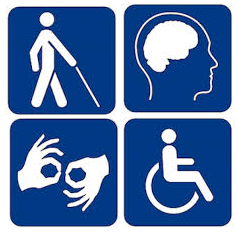This website uses cookies so that we can provide you with the best user experience possible. Cookie information is stored in your browser and performs functions such as recognising you when you return to our website and helping our team to understand which sections of the website you find most interesting and useful.

Putting together the right team determines the success of any project. Be sure to include people with disabilities when putting together your accessibility team. People with disabilities (sometimes abbreviated to PWD) are the people faced with accessibility barriers on a daily basis. They have assistive technology experience and skills, and they can often provide solutions that others might not. It’s important to include end-users who can give accurate feedback about your accessibility solutions and usability. It also makes sense to have someone helping with accessibility feedback if you should receive complaints. Employees familiar with assistive technology can better understand the barriers being described by someone telling you they cannot access your content, tools, or services.
People with disabilities face a variety of barriers
People who are blind or who have low vision do not have the same issues accessing digital information as people with mobility issues or cognitive disorders. It’s important to include a variety of people on your accessibility team if possible. Each person will have input into what works best for them and how best to help remove digital barriers. By including a broad range of people, you can find the best solutions that will make your digital content work for everyone, not just a few groups.
1. Assistive technology experience
Many people with disabilities have experience using assistive technology such as screen readers, connected Braille displays, keyboard-only, joystick or other mobility-adaptive input tools. These skills can be invaluable for accessibility testing and validating accessibility compliance. Accessing digital content with assistive technology can be very different than accessing it visually or with a mouse.
The flow of information, what is presented digitally rather than visually, and interaction with items on screen such as buttons, form fields, and dynamic or animated content can be quite different. A person who can see how boxed content, visually labeled form fields and buttons are meant to be used may not realize that these items are digitally presented by to a screen reader user in the wrong order, or without labels (or worse, just called “Button”… button to WHERE??) or that the form field they are trying to fill in has no digital explanation of what information is needed.
2. People with disabilities can evaluate usability
People who are familiar with assistive technology tools can evaluate whether or not accessibility features are actually usable. They can point out if accessibility solutions have made accessing your information, tools, and content more awkward, and often can suggest better approaches for presenting your content to assistive technology users. It is important that the people responsible for maintenance and review of these digital tools and content be familiar with how it functions with assistive technology.
A person who can easily move the mouse and click on even the tiniest object on the screen may not even realize how difficult it is to hit that target if you have mobility issues such as shaking hands or poor hand-to-eye coordination. Likewise, most people would not even consider that using red or green to differentiate information visually (such as a pie chart with red and green depictions) would not be helpful for someone who is colorblind. These items might pass accessibility checkers and technically be 100% compliant. But that doesn’t mean a person using assistive technology can actually use or access the material. While technically a huge wall of text unbroken by headings isn’t noncompliant, people using screen readers or Braille displays faced would find that format unusable because finding the information they actually need or want is difficult and time-consuming.
3. People with disabilities know best practices
People with disabilities spend a lot of time looking for solutions to the barriers they face. They are familiar with best practices for accessibility both physically and digitally. They can often recommend the easiest and best solutions to accessibility issues. Additionally, they can identify common barriers faced so these can be avoided when authoring content and building webpages. They can make recommendations such as “don’t use carousels for images” and “sans serif fonts are easier” and “that color contrast isn’t right” and “this platform is more accessible than that one.” Use the expertise available to you from the end-users you are trying to reach.
Accessibility initiatives led by PWD are best
Accessibility solutions driven by people with disabilities are better than solutions that don’t include that 20% of your target audience. The best equipped to recommend fixes and best practices are people with a clear understanding of daily digital accessibility barriers. Including staff with disabilities on your accessibility team will boost your accessibility performance and help avoid errors that accessibility testing and checking tools miss. Be sure to include your in-house experts in the accessibility process.
Not sure how to begin addressing accessibility solutions in your organization? Contact us: we’re happy to help!
Tammy Albee
Tammy Albee | Director of Marketing | Equidox Tammy joined Equidox after four years of experience working at the National Federation of the Blind. She firmly maintains that accessibility is about reaching everyone, regardless of ability, and boosting your market share in the process. "Nobody should be barred from accessing information. It's what drives our modern society."
